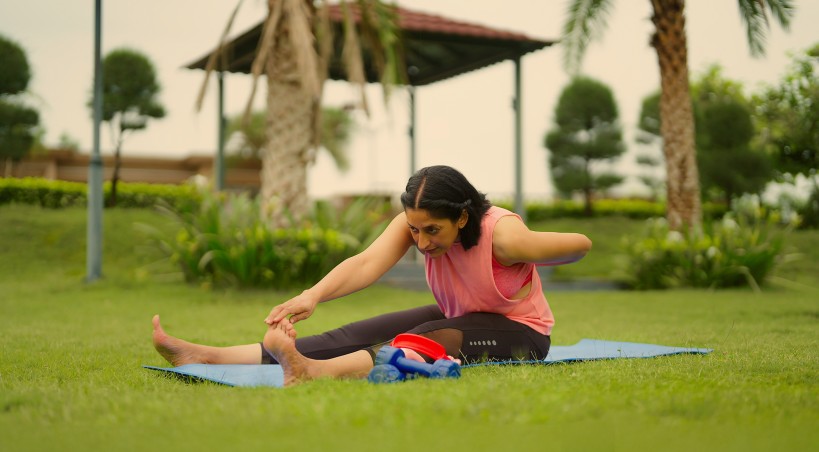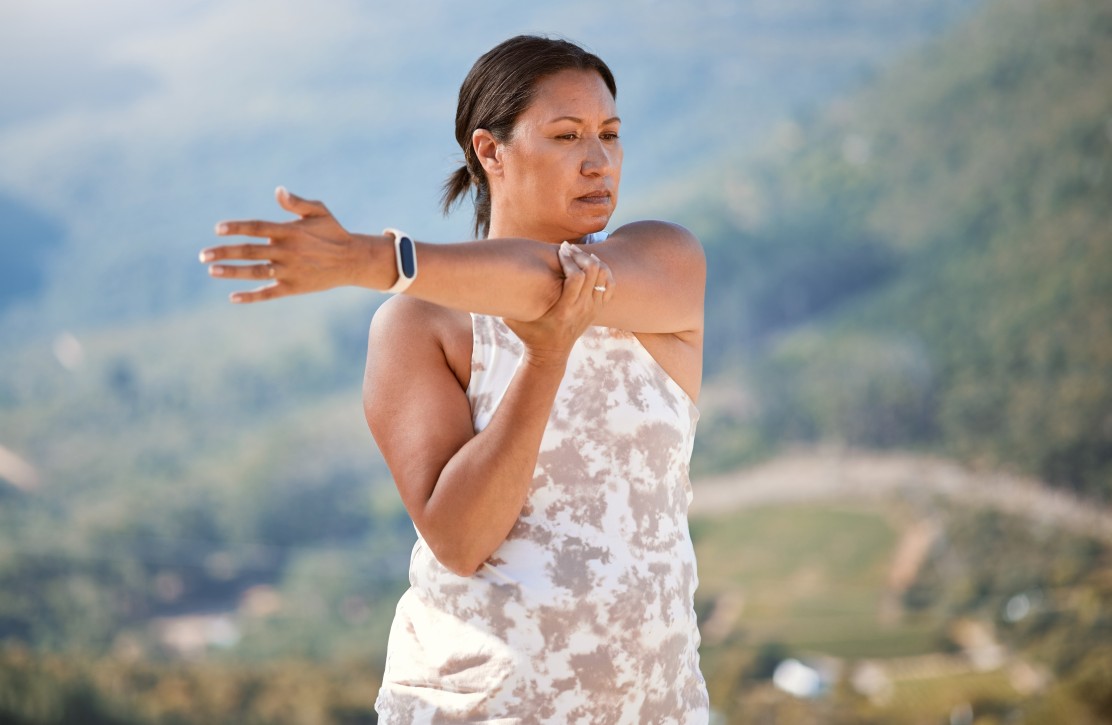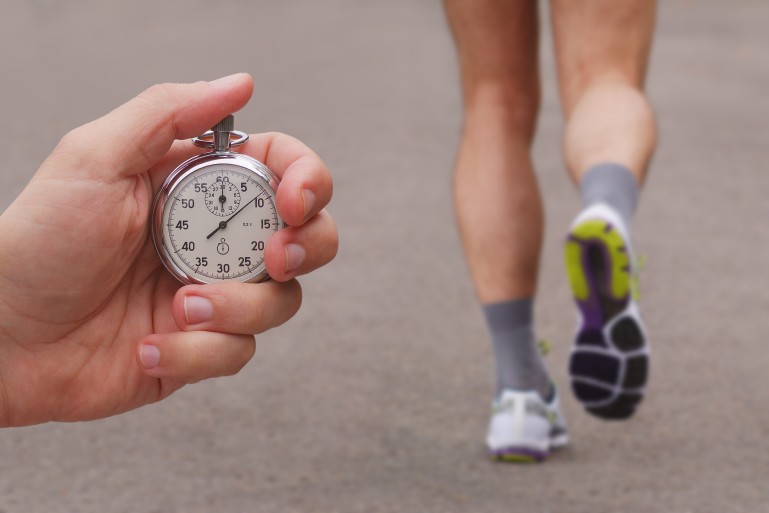Diabetes and Exercise: 4 Best Exercises for Diabetes

Managing diabetes is not about just having a good diet and taking medications on time. You also need to workout regularly to regulate your blood sugar, improve insulin sensitivity, and enhance your overall well-being. However, exercising with diabetes comes with unique challenges.
To exercise safely, you should follow exercise tips for diabetics, and one of these is tracking your blood sugar levels. Doing so will help you know how your body responds to exercise and avoid blood sugar spikes or drops.
In this article, you will learn about different exercises suitable for diabetics, essential tips to ensure safe activity, and how to effectively monitor your blood sugar levels before, during, and after workouts.
Why Is Exercise Important for Diabetics?
Exercise is important for everyone, but for a person with diabetes, it can be life-changing. As a diabetic, when you indulge in regular physical activities, you can keep your blood glucose levels in check by making your muscles more sensitive to insulin, enhancing your body’s ability to use glucose for energy. It’s particularly beneficial when diagnosed with Type 2 diabetes, where insulin resistance is usually a key issue.
Additionally, you can improve your cardiovascular health, lose weight, and boost your mental health, all of which contribute to managing your diabetes.
Key Workout Tips for Diabetics: Know the Types of Exercises
So, are you thinking of incorporating exercises into your routine to manage your diabetes? Trying to figure out what exercises will be suitable for you? In this section, we will be talking about the best exercise to control blood sugar, along with some helpful workout tips:
Aerobic Exercises
You can start your workout journey with some mild to moderate aerobic exercises. Walking, cycling, jogging, swimming, or dancing are some great aerobic exercises to get your heart rate up, lower blood sugar, improve insulin sensitivity, and boost your cardiovascular health. Do any of these exercises for at least 30 minutes five times a week at a moderate intensity. This means your heart rate should increase, but you should still be able to talk comfortably. If you're aiming for higher intensity, you can work up to more vigorous forms of these exercises, like brisk walking or faster cycling, ensuring you get a good workout without overexertion.

Strength Training
Are you looking forward to building some muscles? Strength or resistance training can help, along with improving your insulin sensitivity. The more muscle mass you have, the better your body can utilise glucose, preventing blood sugar spikes. Aim to include weightlifting, resistance band exercises, and bodyweight exercises (like squats, push-ups, or lunges) in your weekly routine. Do these exercises twice a week, targeting major muscle groups. Each session should last 20 to 40 minutes, depending on your strength and endurance. Start with lighter weights or resistance, and gradually increase the load as your strength improves.

Flexibility and Balance Exercises
Older people suffering from diabetes are usually prone to joint stiffness and injuries. For such people, it’s advisable to engage in flexibility and balance exercises. Pilates, stretching activities, or yoga exercises for diabetes will help enhance coordination and muscle control, which is crucial for avoiding falls or accidents. These exercises will also help relieve stress, which can benefit your health since stress can negatively impact blood sugar control. Aim to practice flexibility exercises for about 15 to 30 minutes at least two to three times a week and balance exercises for 5 to 10 minutes daily to maintain stability and mobility.

Interval Training
You have long started your workout journey as a diabetic and now want to increase the challenge quotient. If so, incorporating high-intensity interval training (HIIT) into your workout routine can help. It involves short bursts of intense exercise followed by recovery periods. For example, you might sprint for 30 seconds, then walk for 1 to 2 minutes, and repeat this for about 20 to 30 minutes. Perform HIIT workouts one or two times per week as part of a well-rounded routine. Make sure to balance these high-intensity sessions with rest or lighter activity to avoid overtraining.

Doing this type of workout will help you improve your cardiovascular health and insulin sensitivity in a shorter period.
7 Diabetes Exercise Tips
Now that you know the best type of exercise to control blood sugar, let’s learn what tips and precautions you should follow for a safe and effective workout:
Discuss your potential workout routine with your doctor, and they will let you know if your body is ready for it.
If you are just a beginner, consider starting with 10 minutes of exercise and increasing the duration gradually up to 30 minutes a day.
Always carry a small carbohydrate snack with you when exercising in case your blood sugar gets low.
Make a habit of exercising, eating, and taking your medicines at the same time daily to prevent blood sugar from dropping.
Among the most vital exercise tips for diabetics is to check your blood sugar regularly before, during, and after exercising.
When working out, always wear athletic shoes that are right for your activities.
Drink water before, during, and after a workout, no matter whether you are thirsty or not.
When to Monitor Your Blood Sugar?
As discussed above, exercising with diabetes requires careful blood sugar monitoring. Tracking your blood sugar is one of the most common diabetes exercise tips you should follow, as it can help prevent complications like hypo or hyperglycemia. Here’s how you can effectively monitor your blood sugar before, during, and after exercise:
Before Exercise: Check Your Blood Sugar
Do you take insulin or other diabetes-managing medicines that can cause low blood sugar? If yes, you should check your blood sugar for 15 to 30 minutes before working out. Before you begin any exercise routine, it’s crucial to check your blood sugar levels. Here are some general guidelines for blood sugar levels prior to exercising:
If your blood sugar is below 100 mg/dL, you should eat a small carbohydrate snack like a piece of fruit or a granola bar to avoid hypoglycemia during exercise.
If your blood sugar is above 250 mg/dL, test for ketones, especially for Type 1 diabetics. Are ketones present? If yes, you shouldn’t exercise until your blood sugar is under control, as exercising with high ketones can lead to ketoacidosis.
Your blood sugar level should be between 100 and 200 mg/dL before exercise.
During Exercise: Watch for Signs of Low Blood Sugar
Planning to do a long workout? In such a case, you should check your blood sugar every 30 minutes to know whether it’s stable, rising, or falling. In addition, pay attention to how you feel during exercise and be alert for the following signs of low blood sugar:
Dizziness
Shakiness
Sweating
Weakness or fatigue
Irritability or confusion
Rapid heart rate
If you notice any of these symptoms, you must immediately stop exercising and check your blood sugar. If your blood sugar level is 70 mg/dL or lower, consume a fast-acting carbohydrate like glucose tablets, juice, or candy, and recheck your blood sugar 15 minutes later. If it’s still low, consume another 15-gram carbohydrate serving and then test again after 15 minutes. Repeat the process until your blood sugar stabilises and is more than 100 mg/dl.
After Exercise: Check Your Blood Sugar Again
As soon as you are done with your workout, check your blood sugar once more. Indulging in physical activity can lower your blood sugar for hours after the workout. So, continue monitoring your blood sugar level for the next few hours and consume a carbohydrate snack if it drops too low.
Wrapping Up
Working out is great for managing diabetes, but you must approach it with care. Incorporating the above-discussed exercise types into your routine, following the vital exercise tips for diabetics, and regularly tracking your blood sugar before, after, and sometimes during exercise can help you make the most out of your active lifestyle. Also, you can seek help from a diabetology specialist for an effective workout routine that is compatible with your overall health.
FAQs
1. What type of exercise is best for managing diabetes?
A mix of aerobic exercises (like walking and swimming) and strength training (like weight lifting) works best. These improve insulin sensitivity and help control blood sugar levels.
2. How often should diabetics exercise?
Aim for at least 150 minutes of moderate exercise per week, spread across 3-5 days, with no more than two consecutive rest days.
3. Should I check my blood sugar before exercising?
Yes, check your blood sugar 30 minutes before exercising. If it’s below 100 mg/dL, have a small snack. If it’s above 250 mg/dL with ketones, avoid exercise.
4. Can exercise cause low blood sugar levels?
Yes, especially if you’re on insulin or certain medications. Monitor your sugar before and after exercise, and carry a fast-acting carb like glucose tablets.
5. What’s the safest time to exercise if I have diabetes?
Exercising after meals can help control blood sugar spikes. Avoid working out late at night to reduce the risk of overnight hypoglycemia.
Citations
Atakan, M. M., Li, Y., Koşar, Ş. N., Turnagöl, H. H., & Yan, X. (2021). Evidence-Based Effects of High-Intensity Interval Training on Exercise Capacity and Health: A Review with Historical Perspective. International Journal of Environmental Research and Public Health, 18(13), 7201. https://doi.org/10.3390/ijerph18137201
Colberg, S. R., Sigal, R. J., Yardley, J. E., Riddell, M. C., Dunstan, D. W., Dempsey, P. C., Horton, E. S., Castorino, K., & Tate, D. F. (2016). Physical Activity/Exercise and Diabetes: A position statement of the American Diabetes Association. Diabetes Care, 39(11), 2065–2079. https://doi.org/10.2337/dc16-1728
Diabetes and exercise: When to monitor your blood sugar. (n.d.). Mayo Clinic. https://www.mayoclinic.org/diseases-conditions/diabetes/in-depth/diabetes-and-exercise/art-20045697
Kanaley, J. A., Colberg, S. R., Corcoran, M. H., Malin, S. K., Rodriguez, N. R., Crespo, C. J., Kirwan, J. P., & Zierath, J. R. (2022). Exercise/Physical Activity in Individuals with Type 2 Diabetes: A Consensus Statement from the American College of Sports Medicine. Medicine & Science in Sports & Exercise, 54(2), 353–368. https://doi.org/10.1249/mss.0000000000002800
Low blood glucose (Hypoglycemia). (2025, January 3). National Institute of Diabetes and Digestive and Kidney Diseases. https://www.niddk.nih.gov/health-information/diabetes/overview/preventing-problems/low-blood-glucose-hypoglycemia
Niemann, M. J., Tucker, L. A., Bailey, B. W., & Davidson, L. E. (2020). Strength training and insulin resistance: the mediating role of body composition. Journal of Diabetes Research, 2020, 1–11. https://doi.org/10.1155/2020/7694825
Raveendran, A. V., Deshpandae, A., & Joshi, S. R. (2018). Therapeutic role of yoga in Type 2 diabetes. Endocrinology and Metabolism, 33(3), 307. https://doi.org/10.3803/enm.2018.33.3.307
Yang, Y. J. (2019). An overview of current physical activity recommendations in primary care. Korean Journal of Family Medicine, 40(3), 135–142. https://doi.org/10.4082/kjfm.19.0038





